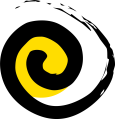What is Toyohari?
Acupuncture is being increasingly accepted, both by the medical establishment and the general public, as a reputable and safe way of treating a wide range of conditions. Toyohari is a refinement of this 2,500 year old tradition, derived from classical Chinese medical knowledge. These original techniques and methods have been innovatively reviewed in the context of both modern clinical experience and in the context of the times in which we live. Toyohari’s gentle approach, which emphasises touch, was developed in Japan where acupuncture has been uniquely influenced by its four-hundred year old tradition of blind acupuncture practitioners. The treatment is largely based on the practitioner’s ability to feel and work with Qi (pronounced chee), a subtle energy which flows throughout a person’s body and in particular along twelve main channels or meridians. Practitioners use specialised needle techniques, unique to Toyohari, which are very gentle and non-invasive, making it particularly suited to children and for those who are wary of needles.
History
In 1959 Kodo Fukushima, a blind Japanese acupuncturist founded the Toyohari Medical Association, which trained hundreds of sightless practitioners. The approach is similar to other ‘five element’ or ‘five phase’ styles such as ‘Meridian Therapy’ but the needle techniques are quite different. The practice of Toyohari is constantly evolving as practitioners regularly come together to study and work with each other. More recently the association has started to accept sighted practitioners and today the Toyohari tradition is alive and strong in Japan and is growing in Australasia, the United States and Europe.

